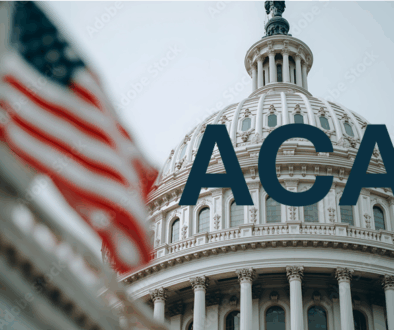What happens when states purge their Medicaid rolls?
Nearly 4 million Medicaid recipients have been disenrolled from coverage since the Medicaid unwinding began in April, according to data released last week from the Center for Medicare and Medicaid Services.
Who is losing Medicaid coverage and where might those who lose it obtain other coverage? An analyst dug into the statistics during a webinar sponsored by the University of Southern California Annenberg Center for Health Journalism.
The webinar coincided with CMS’ release of the most recent data concerning Medicaid disenrollment since April.
The Medicaid unwinding refers to the end of the Medicaid continuous enrollment provision that was part of pandemic-related legislation passed by Congress. During the pandemic, states were prohibited from disenrolling people from Medicaid in exchange for an increase in federal Medicaid matching payments. But the Consolidated Appropriations Act ended that continuous enrollment provision on March 31 and phased down the enhanced federal Medicaid funding to the states through the end of the year. As a result, states could disenroll people who are no longer eligible for Medicaid on April 1.
As of the end of March, 93 million Americans were enrolled in Medicaid, said Jennifer Tolbert, associate director with the Program on Medicaid and the Uninsured at KFF. Earlier this year, KFF estimated about 17 million of them – about 18% – would lose Medicaid coverage. But so far, the current disenrollment rate is 38% among those who have completed their Medicaid renewal and received a determination.
“We think the overall disenrollment rate will decline over time,” Tolbert said. “But if we do end up at this rate, we could see 35 million disenrolled.”
However, KFF found a wide variation in disenrollment rates across reporting states, ranging from 82% in Texas to 10% in Michigan. Some states (such as Texas and Idaho) are initially targeting people early in the unwinding period that they think are no longer eligible or who did not respond to renewal requests during the pandemic, but other states are conducting renewals based on an individual’s renewal date.
Across all states with available data, 73% of all people disenrolled had their coverage terminated for procedural reasons, KFF reported. There is also wide variation in rates of procedural disenrollments across states reporting this breakout, ranging from 96% in New Mexico to 30% in Iowa. Procedural disenrollments are cases where people are disenrolled because they did not complete the renewal process and can occur when the state has outdated contact information or because the enrollee does not understand or otherwise does not complete renewal packets within a specific timeframe. However, many people who are disenrolled for these paperwork reasons may still be eligible for Medicaid coverage.
“We’re still in the early months of the unwinding,” Tolbert said. “Some of the data represents only one month. It’s still too early across a number of states to identify any trends. But we are trying to make sense of the variation we are seeing across states.”
Many Medicaid recipients will become uninsured
A KFF analysis indicated many people disenrolled from Medicaid will become uninsured, even if they eventually re-enroll in Medicaid or obtain over coverage. The analysis showed that 65% of those who were disenrolled from Medicaid or CHIP experienced a period of being uninsured. In addition,
17% were uninsured for a full year.
26% were insured in another source of coverage for a full year.
16% spent some time uninsured and some time with other health coverage during the year.
33% re-enrolled in Medicaid or CHIP after a period of being uninsured.
9% re-enrolled in Medicaid or CHIP after enrolling in another source of coverage.
“To date, there is not much information available on what people are doing after disenrollment this time,” Tolbert said. “We need to think about helping people who are ineligible transition to other coverage.”
CMS said many people leaving Medicaid or CHIP may transition to coverage through the Affordable Care Act marketplace. CMS said its goal is to help people who are still eligible for Medicaid and CHIP to keep their coverage and help those who are no longer eligible transition to another source of coverage.
Susan Rupe is managing editor for InsuranceNewsNet. She formerly served as communications director for an insurance agents’ association and was an award-winning newspaper reporter and editor. Contact her at Susan.Rupe@innfeedback.com. Follow her on Twitter @INNsusan.
© Entire contents copyright 2023 by InsuranceNewsNet.com Inc. All rights reserved. No part of this article may be reprinted without the expressed written consent from InsuranceNewsNet.com.
The post What happens when states purge their Medicaid rolls? appeared first on Insurance News | InsuranceNewsNet.



